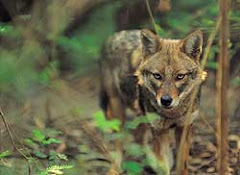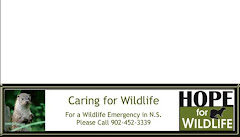Things have changed a lot in Nova Scotia’s woodlands and waterways in the past few hundred years. Only a part of it is the flora and fauna. The rest is us.
When Europeans first arrived, wild creatures they encountered differed greatly from what we have now. Moose and caribou were common. There were no white tailed deer. Wolves sometimes wandered in from New Brunswick, but the top predator was the lynx. In the air, blue birds and purple martin were common. There were no starlings or house sparrows. Nova Scotia’s streams and lakes were rich with trout and salmon, and no-one had ever seen a smallmouth bass or a pickerel.
What happened? Well, for one thing, we did. The European settlers, unlike our native peoples, didn’t understand the delicate balance within an ecosystem. Lumbering, farming, mining, hunting, fishing, and damming all adjusted the habitat. They combined with climate change and disease to makes things difficult for many of the original species. In turn, that created new conditions favourable to new species , and the old guard could not compete with them.
Meanwhile, we changed as well. Forced to live with nature, we at first learned a few things about it. Then, as we grew civilized and more urban, we began to forget. The Hope For Wildlife Animal Rescue and Rehabilitation Center in Seaforth deals with the results every year. People kidnap fawns because they think they need rescue from the dangers of the forest. Someone picks up a lost kitten on a woodland road, later finding out it’s a bobcat.
A recent Canadian Press news item put the finger on the problem. A fall-off in use of our national parks represents a general decline of understanding and interest in the wilderness.
“The population of Canada has become very urban,” a Parks Canada representative says. “A few decades ago, people would go camping with their parents. That’s not the trend anymore.”
“There are so many other recreation and entertainment activities for people to do. They have so many other choices,” she adds.
Because of this, we are losing track of what’s going on in the natural world around us. Two basic rules of Mother Nature are being forgotten.
The first is that any vacuum in the food chain will be filled. The second, wild creatures who can adapt to what we’ve done to the natural world will prosper, no matter what we do to stop them.
Take, for example, the case of the coyote. Its establishment in Nova Scotia has coincided with recent urbanization, so much so that many people really don’t understand what has happened. This animal is here to stay, and when a member of Truro town council recently suggested it should be eliminated, he was, no pun intended, howling against the wind. That was tried when they first arrived in the 1970s.
Hunting, trapping, snaring, and poisoning didn’t make a dent in the coyote influx. Everything that could stop its population growth failed as the western coyote, a solitary, shy prairie animal, bred its way east over the past 100 years. In northern Ontario, it interbred with wolves, in southern Ontario with feral dogs. By the time it moved into Nova Scotia, it was a hybrid worthy of respect.
The eastern coyote is bigger than the western one. On the prairie, it is a lone hunter. Here, it has picked up the wolfish tendency to hunt in a pack. This animal’s sense of smell and intelligence can be vouched for by anyone who has tried to hunt them, and despite what I keep hearing about how shy the coyote is, people have been relating stories for the past 30 years on how bold they are becoming. Perhaps the shyness is a western thing.
Could we eliminate them if we wanted? No. That is impossible. It is estimated there are about 8,000 coyotes in Nova Scotia. If we try to upset our carrying capacity for the species , we’ll quickly see why they are considered one of nature’s great survivors. The females can breed in their first year, up to twice per year, and that kicks into high gear if the number of coyotes drops below what an area can sustain. Estimates are that, to have any hope of success, 75% of the population would need to be killed every year for 50 years.
This is just one example. Are we really so out of touch with what lives on the edge our urbaneness?
In my lifetime, the woods and fields of Nova Scotia have changed, and I’ve had to adjust my thinking. Part of that includes a new predator that deserves respect. Somehow we need to unplug our recreation, teach our children the whiteness of a birch tree, and regain some knowledge of our natural world.
(30)
Tuesday, November 17, 2009
Subscribe to:
Posts (Atom)






